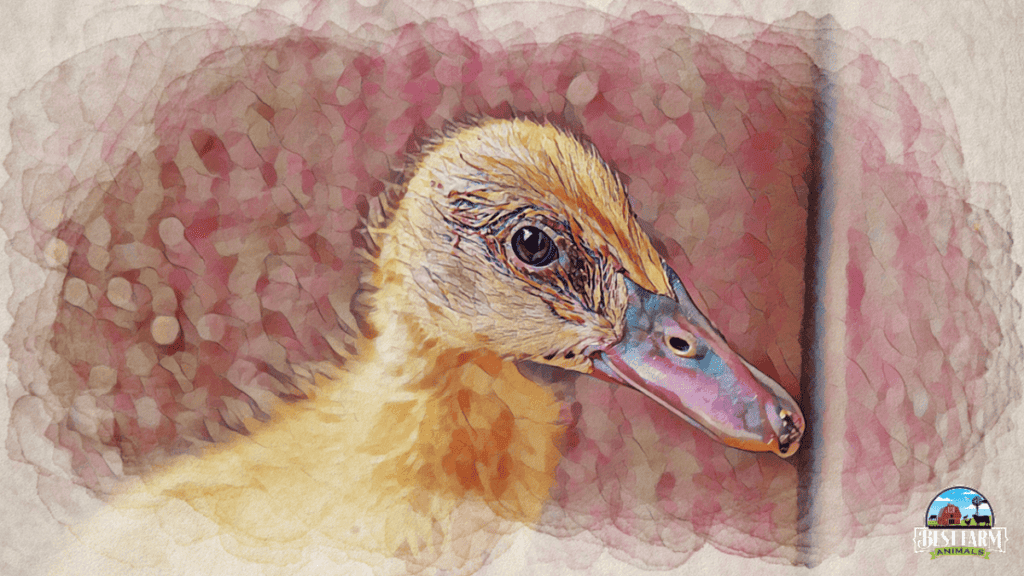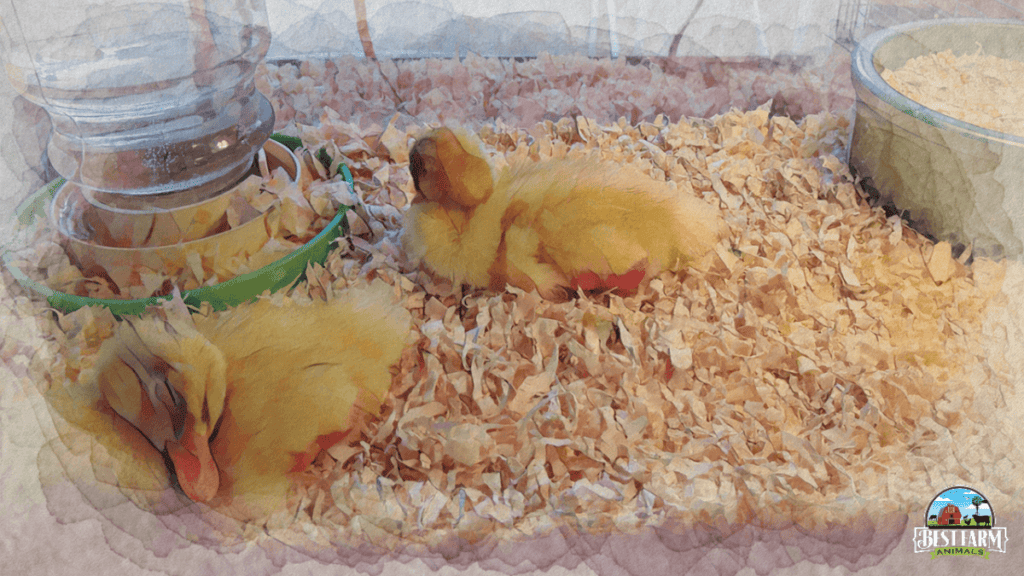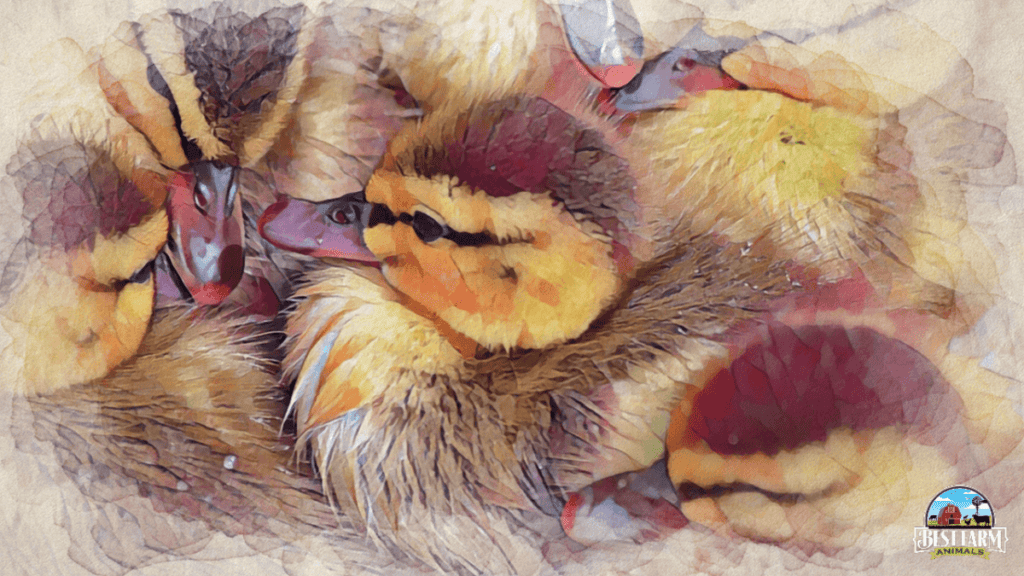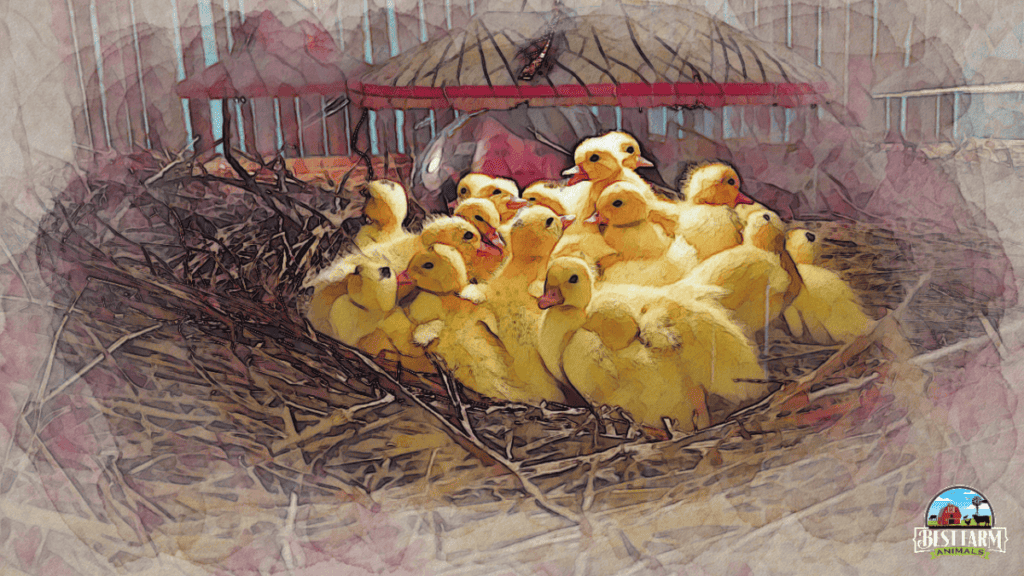“Which brooder is the right one for my farm?” In the world of farming, especially when it comes to raising ducks, you’ll often find yourself weighing the options of a commercial brooder against a no-mess brooder. You might be sitting there, a cup of coffee in hand, staring out over your fields and wondering about your options.
Both types of brooders come with their own benefits and considerations, much like the diverse tasks that each day brings to our beloved farmlands.
The choice between commercial and no-mess duck brooders is much more than a simple either-or; it’s about understanding what works best for your ducks and aligns with your farming principles.
What is a duck brooder?
A duck brooder is a warm, safe enclosure for raising ducklings. Ducklings need a brooder for about 2-3 weeks to provide the necessary warmth and protection. Typically, you can move ducklings to a brooder immediately after hatching. Ducks brood or sit on their eggs to incubate them until they hatch.
Duckling brooders are typically made of materials like wood, metal, or durable plastic, with bedding often comprised of straw or wood shavings.
Table of Content For Duck Brooder
Now, let’s talk further about baby duck brooders, delve into the specifics of each option, and figure out which one could be the best fit for your farm and your feathered friends.
Supplies You Need For A Chick or Duck Brooder:
This list contains affiliate products. Affiliate products do not cost more but helps to support BestFarmAnimals and our goal to provide farm animal owners with accurate and helpful information.
Heavy Duty Totes. You Can use the cheap Walmart ones, but they will break more often, usually after only one season. I like to use heavy-duty totes- these are the ones I use. I haven’t had any totes break, and I use them for everything, including a brooder.
Heat source for your chicks and ducklings. This chick brooder is a safer option than a heat lamp, but if you are just starting out- this heat lamp is a good one to use and is cheaper. Don’t forget bulbs for your heat lamp. Color doesn’t matter on the temperature, but red bulbs will allow the chicks to sleep better.
Pine Shavings for bedding. Never use cedar. Don’t use shavings from treated wood.
Food and Water Containers like these should allow ducks to submerge their beaks. I like the raised platform because I’ve had chicken drown before and this style drastically reduces the accidental drownings.
Manna Pro Non-Medicated Starter Feed is a healthy starter feed for both chicks and ducks. Never feed ducks medicated and don’t feed the littles the same feed as your laying hens.
Hardware Cloth to keep out predators from the brooder. Even your friendly cat or dog can quickly kill baby ducks and chicks.
I also like to use ratchet straps when the ducks are too big for a brooder, and I have to switch to a lamp. I raise the lamp every few days so the ducks or chicks can acclimatize to normal temps.
Best Duck Brooder: DIY No-Mess, Commercial, Outdoor, or Brooder Box?
As we venture into the heartland of duck rearing, one question often looms large: What’s the best kind of duck brooder?
No-Mess DIY or commercial? Perhaps an outdoor brooder or maybe a brooder box? There’s no one-size-fits-all answer, but let’s explore our options.

No-Mess DIY Brooders: Budget-Friendly and Perfect for Personalization
Creating your own DIY duck brooders, including the no-mess variety, can be an economical choice that makes the most of materials you may already have on hand, such as lumber, hardware cloth, and bedding materials like straw or wood shavings.
This homemade option lets you tweak the design to fit the exact requirements of your flock, no matter its size.
However, be prepared that DIY brooders may demand a bit more of your attention. They might lack the streamlined cleaning features found in some commercial models, and adjusting the temperature and ventilation to ideal levels could present a learning curve, particularly for newcomers to duck molting.
If you’re resourceful and have surplus supplies around, you might cobble together a functional no-mess DIY duck brooder for a modest sum of $20-$50.
Conversely, if you’re starting from scratch and need to purchase everything new, anticipate costs that could exceed $100.
Materials Needed: Lumber, hardware cloth, and bedding materials such as straw or wood shavings.
Pros: Economical, highly customizable, adaptable to varying flock sizes, and opportunity to repurpose existing materials.
Cons: Requires more maintenance and manual oversight, achieving the right temperature and ventilation can be tricky for novices, and necessitates a more hands-on approach.

Commercial Brooders: Common Baby Duck Brooder With Built-in Features
Commercial duck brooders are sturdier, more consistent choices designed to provide optimal conditions for your ducklings.
They often come with built-in heaters, adjustable ventilation, and easy-clean features.
While more expensive, they’re a reliable, time-saving option, especially for larger flocks. However, they offer less flexibility for customization and require an initial investment that some may find steep.
Commercial brooders generally range from around $50 to a few hundred dollars, depending on the size and features.
For example, Brinsea brooders can range from $50-$200, and the Premier Chick heating plate could be around $100-$150.
Materials: Durable plastics or metal with built-in heating and ventilation systems.
Pros: Sturdy, consistent, comes with built-in heaters and adjustable ventilation, easy to clean, reliable for larger flocks.
Cons: Less flexibility for customization, requires an initial investment, and could be overkill for a small flock.
Most Recommended Commercial Ducklings Brooder
| Product Name | Benefits |
| Brinsea EcoGlow Brooder | Known for their safety and energy efficiency, Brinsea’s brooders are a favorite among many poultry farmers. The radiant heat plate mimics a mother duck’s warmth, which comforts the ducklings. |
| RentACoop Heating Plate for Chicks | Like the Brinsea model, this one has an adjustable heating plate to accommodate growing ducklings. It’s easily cleanable and quite durable. |
| K&H Thermo-Poultry Brooder | This one boasts a thermostat-controlled heating element and is designed to be adjustable as your ducklings grow. |
| Premier Chick Heating Plate | This brooder plate for ducklings is a reputable option for its uniform heating, easy height adjustment, and simple cleaning. |

Outdoor Brooders: More Demanding to Clean, Space-Saver
Outdoor brooders allow your ducklings to get accustomed to the environment and weather conditions from a young age, potentially promoting stronger, healthier ducks. They must be predator-proof and have a heat source for chilly nights.
Remember that managing an outdoor brooder’s environment can be more demanding, considering weather fluctuations and potential predator threats.
Similar to DIY brooders, the price can vary greatly on outdoor brooders. You could spend several hundred dollars if you’re starting from scratch and need to build a predator-proof enclosure.
Materials: Wood, wire mesh, straw or wood shavings for bedding, and external heat lamps.
Pros: Allows large-capacity ducklings to acclimate to the outdoors early on, potentially stronger and healthy ducks. Space-saver if you have many ducklings in a flock.
Cons: Requires a predator-proof setup, managing the environment can be demanding due to weather fluctuations, requires heat source for colder periods.

Duck Brooder Box: Perfect For Small Numbers of Ducklings
These are essentially smaller, contained brooders for a duck, ideal for a modest number of ducklings. Boxes can be homemade or purchased and are easily manageable due to their size.
The smaller space does require frequent cleaning to maintain hygiene and avoid health issues. They’re a great option if you’re just starting out or if your flock isn’t too large.
Brooder boxes can be quite affordable if you’re using a simple plastic or wooden box and a heat lamp. The box might cost $10-$20, and a heat lamp can be $20-$50.
Materials: Plastic or wooden boxes, small heating elements, and straw or wood shavings for bedding.
Pros: Manageable size, great for small flocks or beginners, can be homemade or purchased.
Cons: Frequent cleaning required due to smaller space, not ideal for larger flocks; ensuring the correct temperature can be challenging.

Building A Duckling Brooder: Right Temperature, How to Clean
The number of ducklings in a duck brooder depends on its size. A good general rule of thumb for brooding ducklings is to provide at least half a square foot (0.05 square meters) of space per duckling in the first week of life.
As they grow, they’ll need more space — by six weeks of age; each duckling should have at least 3 square feet (0.28 square meters) of space.
How long do ducklings stay in a brooder?
While ducklings start to grow their adult feathers at around 2 weeks, they generally aren’t fully feathered until they’re between 5 to 8 weeks old, at which point they can maintain their body temperature and leave the brooder. This time can vary depending on breed and weather conditions.
How warm should a duck brooder be?
The initial temperature in the brooder should be around 90-95°F (32-35°C) for the first week.
After that, the temperature should be decreased by about 5°F (3°C) per week until the ducklings are fully feathered, or the brooder temperature matches the ambient outdoor temperature.

How to keep ducklings in a brooder? The duck brooder should have a warm spot under a heat source and a cooler area where ducklings can escape if they feel too warm. Monitor the behavior of the ducklings to adjust the temperature as needed.
Ducklings huddling under the heat source are likely cold, whereas those staying in the cooler area may be too hot. The brooder should be secure, spacious, and easy to clean.
Steps on Keeping a Duck Brooder Clean
Maintaining a clean brooder for ducks is essential for your ducklings’ health and well-being. At least once or twice a day, remove any visible waste, spilled food, or wet bedding.
This helps prevent the buildup of harmful bacteria and keeps odors down. Here are step-by-step instructions on how to keep a duck brooder clean and control odor:
Step 1: Remove The Ducklings
Remove the ducklings from the brooder and place them in a secure, warm area. Be gentle and careful not to stress them.
Step 2: Discard The Bedding Material
Take out all the bedding material and discard it. You might want to wear a mask as it can get quite dusty.

Step 3: Use Newspaper or Plastic Sheet
If the brooder is small enough, you can move it outside for cleaning. If not, lay down some newspaper or plastic sheet to catch splashes.
Step 4: Sweep Out The Debris
Use a broom or a handheld brush to sweep out any remaining debris.
Step 5: Use Bleach Water
Fill a bucket with warm water and a mild, non-toxic disinfectant. Some farmers use a solution of one part bleach to ten parts water, or you can use a commercially available product made for cleaning poultry equipment.
Step 6: Scrub All Corners
Use a scrub brush to thoroughly clean the brooder, getting into all corners and crevices. Be thorough but careful not to damage the brooder.

Step 7: Rinse The Duck Brooder Thoroughly
Rinse the brooder thoroughly with clean water to remove any residue from the cleaning solution.
Step 8: Wait For The Brooder to Dry
Allow the brooder to dry completely before adding new bedding. This can help prevent mold growth.
Step 9: Add New Bedding
Add fresh bedding to the brooder. Pine shavings are a good choice as they help control odor. Avoid cedar shavings, as they can cause respiratory issues.
Step 10: Return The Ducklings to the Brooder
Return the ducklings to the clean brooder. Monitor them closely for a bit to ensure they’re comfortable and adjusting well after the clean-up.
Remember, your ducklings’ health is paramount. If the brooder smells bad to you, it’s likely much worse for your ducklings, who have a more sensitive respiratory system.
Regular cleaning not only controls smell but also helps prevent diseases.
Duck Brooder FAQs
Do ducklings need water in brooder? Yes, ducklings do need access to water in the brooder. They need it not only for hydration but also for digestion.
It’s important to use a shallow water dish to prevent the ducklings from getting into it and getting too wet or potentially drowning. Keep the water fresh and clean, and monitor the ducklings to ensure they drink adequately.
Is a brooder and incubator the same? No, they’re not the same. An incubator is used for hatching eggs. It maintains the optimal temperature and humidity to mimic the conditions under a brooding mother duck.
On the other hand, a brooder is where ducklings live after they hatch until they’re ready to live outside. It provides heat, protection, and space for food and water.
Are brooder heat plates safe? Yes, heat plates are generally considered safe and are often recommended for brooding ducklings.
They mimic the heat provided by a mother duck and are safer than heat lamps, which have a risk of fire. Heat plates have the added advantage of allowing ducklings to self-regulate their temperature, as they can move away from or closer to the heat source as needed.
Can you use puppy pads for ducklings? Puppy pads can be used in the brooder for the first few days as they provide good traction for the ducklings to prevent spraddling (a condition where their legs slip out sideways).
However, watch the ducklings to ensure they’re not trying to eat the pads. After a few days, you’ll likely want to switch to another bedding material, like pine shavings.
Conclusion
The best way to brood ducklings is to keep the brooding area dry, well-lit, and free from predators. Choose your duck brooder type based on your specific needs, budget, and set up, always ensuring that the ducklings have enough space.
Be it a DIY solution, a commercial brooder, or an outdoor setup, what truly matters is how you manage your environment. Learn more about how to raise ducks for beginners.

